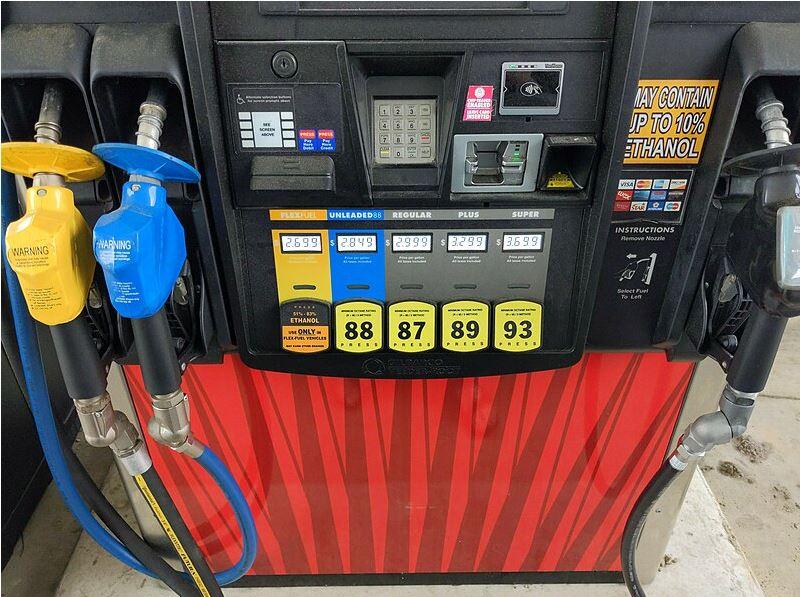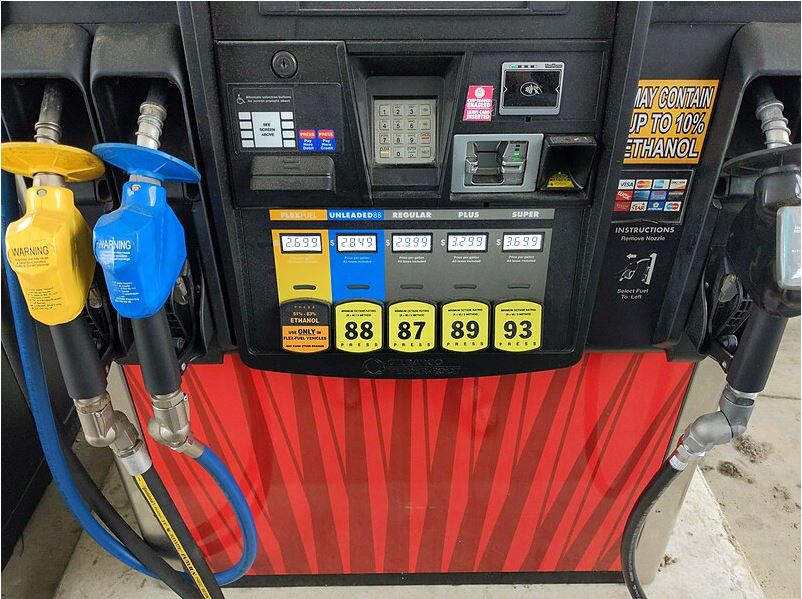

Photo Credit:Gas pump
jlee via wikim cc4
Inflation, as Milton Friedman taught, is always and everywhere a monetary phenomenon.
It is a mathematical fact that gasoline in the U.S.u will eventually rise to $100 for a gallon (perhaps $130 for those interested in higher octane).
This is not fear-mongering, but basic arithmetic and economics. Here’s why.
The price of goods and labor is directly linked to money supply and market factors. This is not merely “supply and demand” economics, but an issue of overheating (or overleveraging) an economy by printing and/or borrowing too much money. When a government prints more money than the underlying economy is generating in real wealth, this is essentially a form of borrowing, often called “debt monetization.”
The United States has been doing this for decades, staving off the ordinary fluctuations in the economy punctuated by innovations and growth alternating with recessions – borrowing money in times of turmoil softens the blow, but also forestalls the consequences.
This is seen not just in the reckless Biden-Harris spending extravaganza masked by upside-down monikers such as “Build Back Better” or the “Inflation Reduction Act,” but across party lines and even centuries.
Notably, the largely forgotten S & L Crisis of the 1980s under the Reagan administration was never paid off: the proverbial can was simply kicked down the economic road (subject to compound interest, of course). The S & L debacle is estimated to have cost U.S. taxpayers some $132 billion, chump change by today’s debt measures. But that “crisis” caused the collapse of more than 1,000 U.S. banks and the insolvency of the Federal Savings and Loan Insurance Corporation.
That $132 billion in 1980s dollars has not yet been paid off – it was simply rolled into the national deficit, followed by decades of mostly deficit spending by both parties. The 2007-2008 financial crisis is estimated to have cost taxpayers some $498 billion, though President Obama famously lied to taxpayers in 2012, claiming the government recouped “every dime” used to rescue the banks he bailed out. Whatever the actual sum, it remains subsumed in the accumulated national federal deficit of about $35 trillion.
Imagine running a household on infinite credit card debt, and you understand the federal government’s profligacy. But it is much worse than that. When unfunded entitlement obligations such as Medicaid and Social Security are counted, the current total estimated debt of the U.S. government exceeds $100 trillion, and the federal debt to GDP ratio is above 122%. Currency and credit derivatives approximated $90 trillion in 2000, when U.S. Treasury dollars were $3,546,531,560, according to usdebtclock.org; they now exceed $1,576,612,150,000 – 444 times as much printed money in 25 years, far outstripping real GDP growth.
A 2024 Ford F-150 now sells for $36,770 ($73,735 for the Platinum model). Has the truck’s “value” increased, or has the relative value of the dollar simply deteriorated? The answer is a tad of both – these 2024 trucks have more gadgets and extras (the Platinum is a hybrid) than a 1986 Ford F-150, which retailed for $8,373 ($19,587.47 in today’s dollars). But that difference between $8,373 and $19,587 is all inflation, which is accelerating dangerously despite Biden administration deceptions.
The moral hazard is that rewarding one’s pet projects and crony donors by printing money and disbursing it favorably is hard to trace. The impact of this practice always falls on the poorest wage earners and fixed-income recipients in the form of higher prices and shrunken real incomes, but is virtually impossible to link back to root causes: thus the temptation to do so because there is no accountability.
In his monetary policy study titled “Money Mischief,” economist Milton Friedman traces this conundrum, emphasizing that overprinting money is always what causes inflation:
According to Milton Friedman (1963)—and also the Deutsche Bundesbank (1999)—inflation is “always and everywhere a monetary phenomenon” and thus the responsibility of central banks. This conclusion builds on the so-called quantity equation (M * V = P * Y), which establishes a relationship between the quantity of money controlled by central banks (M), the price level (P), the quantity of all goods and services produced (Y) and the velocity of money in circulation (V). If the velocity of money in circulation is constant, then the price level rises if the money supply grows faster than the quantity of all goods and services produced.
Friedman also warned that all fiat currencies eventually collapse because they are not backed by actual physical assets. This means that just like that F-150, the price of a gallon of gas will eventually climb to $100/gallon and that wages will never keep pace – without regard to oil supply shortages or interruptions in distribution (such as could be inflicted by an Iranian attack on numerous oil-shipping choke points).
A glimpse of what is inevitably coming to American shores is found in the example of Zimbabwe, which also shows that math, and money-printing, are not racist but color blind – they don’t care what skin color, social justice cause, or Utopian fantasy is employed to violate their fundamental logic. Robert Mugabe tried to harness the Zimbabwean economy for social spending (“social justice”), with devastating effects on that nation’s currency and people. Inflation rates reached nearly 250,000,000 % in 2008, though they have subsided to “merely” 57.5 % currently. A $10 trillion Zimbabwean note can be purchased for about $10 U.S.
The U.S. dollar is not immune to such abuses, and America is on the precipice of a monetary disaster (to be “rescued” by an all-controlling digital currency). As one commentator observed in October 2022 of Biden-seeded inflation:
….the M2 money supply is up 41.6% over the past three years. So while not all inflations are caused by rapid money growth, this one is. Indeed velocity has actually slowed during this period, which means that more than 100% of the inflation comes from monetary policy as defined by Friedman. Thus, at least this time around: It’s the money supply, stupid.
The United States Congress created a bipartisan commission to tackle rising debt, but in an election year there is bipartisan hesitancy to take this mighty monetary bull by its inflationary horns:
More than six months later, the proposal appears all but dead, extinguished by vocal opposition from both the right and the left.
Facing the reality that any fiscal commission would almost certainly suggest that Americans pay more or get less from their government, lawmakers have time and again done what they do so well: punt the problem to the next Congress. And they seem poised to do so again.
This means that even without interruptions of foreign oil supplies or Biden policies shrinking U.S. energy production and oil drilling, reckless U.S. monetary policy promises to drive the price at the pump for gasoline far above a paltry $100/gallon. In the future, American fathers and mothers will not nostalgically say, “I remember when gas was 17 cents a gallon.” They will tell their children, “I remember when gasoline was only $100 a gallon.”
Attorney-farmer John Klar hosts the Small Farm Republic Substack and podcast from his Vermont farm. His recent book is Small Farm Republic: Why Conservatives Must Embrace Local Agriculture, Reject Climate Alarmism, and Lead an Environmental Revival.






